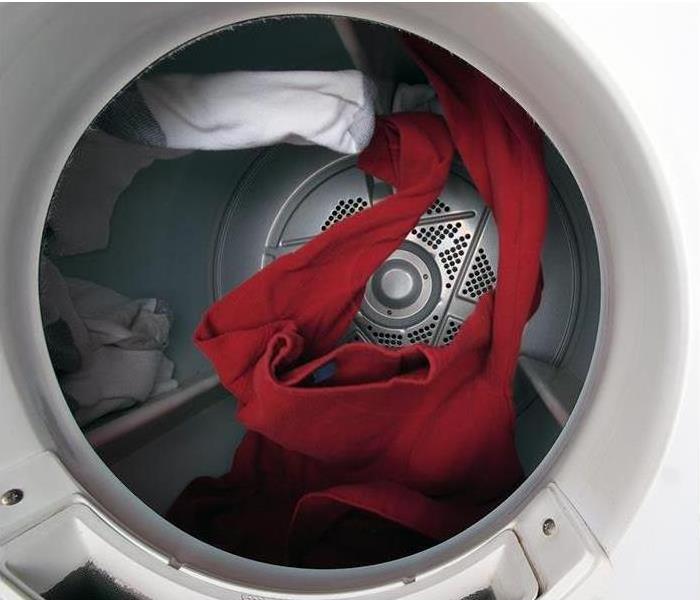Moldy Clothes? What Can You Do?
5/22/2018 (Permalink)
The reason clothing is so susceptible to mold growth is not just because of the mold-inviting circumstances within the laundry room. Generally, when it is worn, clothing collects sweat and skin cells, as well as dirt and other forms of moisture and organic material that mold loves to feast on. Then, it is placed in the laundry hamper and usually sits for days before it it is finally washed. This scenario is typical and may not result in a noticeable mold infestation, but should the soiled laundry be allowed to fester long enough, a mildew smell may be present, as well as visible signs of green, blue, gray, black, or sometimes even white mold on clothes.
Another scenario is becoming more common due to busy lifestyles and poor habits. The quick development of mold on clothes after washing may be surprising to some, but it is quite an ordinary occurrence for those with overwhelmed schedules or those who are vulnerable to procrastination because they often forget to remove clothing from the washing machine once the cycle is finished. As time passes, this leads to the rapid proliferation of mildew and mold on clothes after washing, due to the remaining moisture. Neglecting to put the wet clothes in the dryer for a few hours is not what makes mold grow. Neglecting the clothes in the washer for 6 hours or longer–sometimes a day or even a few days–is the problem. Before too long, a mildew smell will be detected in the washer and clothing. Some assume this is the residue of soap, and while that may be true to some extent, the fact of the matter is that most soaps contains lard and other organic (even synthetic) materials that mold can thrive off of. The smell is not necessarily the residue of soap, but an indication that mold is producing a secondary metabolite–the mildew smell–from consuming that soap.
What is a natural detergent to kill mold? Here is what you will need.
- Two 5 oz. organic castile soap bars (naturally-scented with lavender or peppermint is great but non-scented works just the same)
- 3 cups of washing soda (no, it’s not the same as baking soda)
- 2 cups of borax
- 30 drops of certified-pure lavender essential oil (optional but highly advisable for a mold killing laundry detergent)
Once you have all the materials, this is what to do.
- Cut the castile soap bars into small pieces or chunks. (This is crucial to avoid damaging the food processor.)
- Place the cut castile soap pieces or chunks in the food processor bowl. Pulse the soap on high until what remains are large crumbs.
- Add the washing soda to the food processor and pulse for 1 minute. (After pulsing, all the ingredients should be in powder form and well-combined. If not, try running the food processor again and then mixing with a spoon.)
- Empty the washing soda and castile soap into the storage container. Add the borax and blend well with a spoon.
- Add the essential oils of choice (optional but beneficial) and be sure to mix well.
Do not place this mixture into the drawer or dispenser, place it directly in with the laundry.





 24/7 Emergency Service
24/7 Emergency Service
